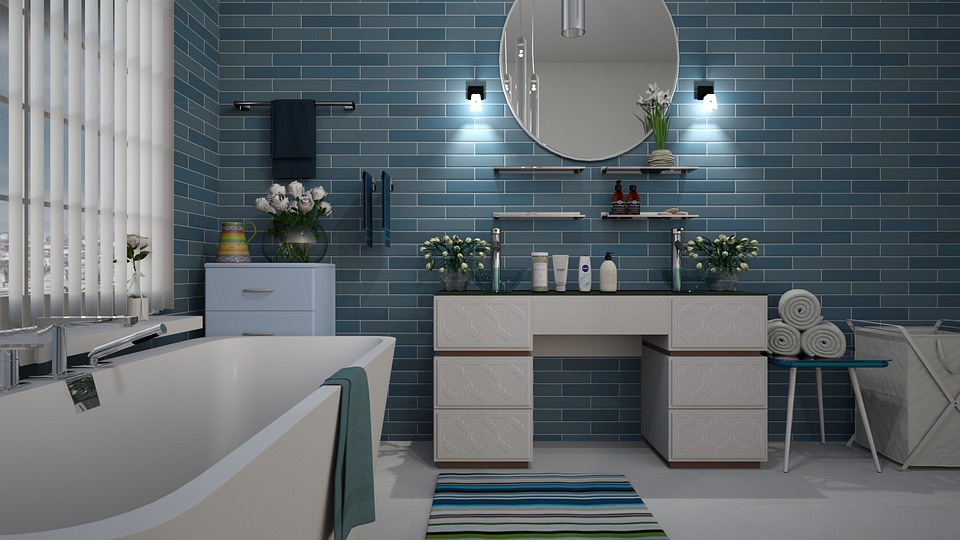One of the most important things to consider when renovating or upgrading your bathroom is the type of floor. In this article, we will explore the 5 best bathroom floor tile, the popular trends in designs, factors to consider when selecting tiles, and the pros and cons of each type. The right bathroom floor tile completely redefines your bathroom. There are a variety of options available for you to create a stunning bathroom that reflects your style and meets your practical needs.
Table of Contents
Types of Bathroom Floor Tiles
There are different varieties to choose from. Each type of tile offers its unique characteristics and advantages. The most common types of bathroom floor tiles are ceramic, porcelain, natural stone, vinyl, and mosaic tiles.
Ceramic tiles are a classic choice for bathroom floors. They are durable, water-resistant, and come in a variety of colors, sizes, and patterns. Ceramic tiles are relatively affordable, making them a popular choice for budget-conscious homeowners.
Porcelain tiles are durable and resistant to water. They are made from fine clay and fired at high temperatures, resulting in a dense and hard-wearing tile. Porcelain tiles are available in a wide range of styles and finishes, with some options that mimic the look of natural stone or wood.
Natural stone tiles add a touch of elegance and luxury to any bathroom. Options like marble, travertine, and slate offer unique and beautiful patterns, textures, and colors. However, it’s important to note that natural stone tiles require regular sealing to protect them from stains and moisture damage.
Vinyl tiles are affordable, durable, and easy to install. This makes them a popular choice for bathroom floor tiles. They are available in different colors and patterns. Some options resemble natural stone or wood. Vinyl tiles are also comfortable to walk on and less slippery.
Mosaic tiles are small tiles that come in various materials, such as glass, ceramic, or natural stone and are often used as accents or for the purpose of decorating bathroom floors. They create beautiful patterns and give your bathroom a unique and personalized appearance.
Popular Trends in Bathroom Floor Tile Designs
Bathroom floor tiles are not just functional; they are also a statement piece that adds style and character to your space. Here are some of the popular trends in bathroom floor tile designs to inspire you:
Geometric patterns:
Geometric patterns are making a comeback in bathroom floor tile designs. From hexagons to chevron patterns, geometric tiles add a modern and trendy touch to your bathroom.
Subway tiles:
These are classic choices that never go out of style. They are rectangular tiles typically used in a brick pattern and create a clean and timeless look in your bathroom.
Large-format tiles:
These are becoming increasingly popular in bathroom design. Large-format tiles make a small bathroom appear more spacious and create a seamless and sleek appearance.
Patterned tiles:
If you want to make a bold statement, consider using this type of tile for your bathroom floor. Either in floral, Moroccan, or geometric patterns, patterned tiles will add a unique and eye-catching element to your space.
Wood-look tiles:
Wood-look tiles have become popular due to their ability to mimic the warmth and beauty of real wood while providing the durability and water resistance of tile. They are a great option if you want to achieve a rustic or natural aesthetic in your bathroom.
5 Main Factors to Consider When Selecting Bathroom Floor Tiles
Choosing the right bathroom floor tiles requires careful consideration of several factors. Here are some:
Durability:
Bathrooms are high-moisture areas, so it’s important to select tiles that can withstand water, humidity, and daily wear and tear. Look for tiles that are specifically designed for bathroom use and have a high durability rating.
Slip resistance:
Safety is a priority in your bathroom. Opt for tiles that have a textured or non-slip surface to prevent accidents, especially in wet areas such as the shower or near the bathtub.
Style and aesthetics:
Consider the overall style and aesthetics of your bathroom when selecting tiles. Choose those that complement the existing elements in your bathroom, such as the vanity, bathtub, or shower. There are tiles available to suit every style you prefer.
Maintenance:
Think about the level of maintenance you are willing to put into your bathroom floor tiles. Some tiles require regular sealing or special cleaning products, while others are low-maintenance and easy to clean. It is important to choose tiles that align with your maintenance preferences.
Budget:
Set a budget for your bathroom renovation and choose tiles that fit within your budget. Remember to consider not only the cost of the tiles but also the installation and any additional materials or labor required.
Maintaining and Cleaning Bathroom Floor Tile
Once you have transformed your bathroom with your preferred floor tiles, it’s important to maintain and clean them properly to keep them looking their best. Consider the following tips:
Sweep or vacuum your bathroom floor regularly to remove any dirt or debris. Use a damp mop or a microfiber cloth to clean the tiles with a mild, non-abrasive cleaner. Avoid using harsh chemicals or abrasive cleaning tools that may damage the tiles.
The grout between the tiles accumulates dirt and grime over time. Use a grout cleaner and a small brush to scrub the grout lines and keep them clean. Regular sealing of the grout helps protect it from stains and moisture damage.
To prevent water damage, make sure to wipe up any spills or stagnating water on the bathroom floor promptly. Absorb excess water by having bath mats or rugs in high-moisture areas, such as near the shower or bathtub.
Avoid using rough or abrasive materials, such as steel wool or harsh scrub brushes, on bathroom floor tiles, as they can scratch or damage the surface. Instead, it is advisable to use a soft cloth or non-abrasive sponges while cleaning.
Depending on the type of tiles you have, periodic deep cleaning may be necessary. Consult the manufacturer’s guidelines or seek professional advice on the recommended deep cleaning methods for your specific tiles.

Pros and Cons of 5 Best Bathroom Floor Tiles
Each type of bathroom floor tile has its own advantages and disadvantages. Here’s an overview of different types of bathroom floor tiles with their pros and cons to help you make the right choice:
Ceramic tiles:
Pros: affordable, wide variety of styles and colors, durable, and water-resistant.
Cons: They are prone to cracks and chips if not properly installed or maintained.
Porcelain tiles:
Pros: They are very durable and water-resistant; a wide range of styles and finishes are available; and they can mimic natural stone or wood.
Cons: Because they are more expensive than ceramic tiles, they can be difficult to install for DIY projects.
Natural stone tiles:
Pros: unique and beautiful appearance; adds value to your home; wide range of options.
Cons: require regular sealing, are more expensive, and some types are more susceptible to scratching or staining.
Vinyl tiles:
Pros: affordable, easy to install, durable, comfortable underfoot, and water-resistant.
Cons: Not as luxurious as natural stone or porcelain, it can show wear and tear over time.
Mosaic tiles:
Pros: adds visual interest and texture; a wide variety of colors and materials are available; can be used as accents or decorative elements.
Cons: They are time-consuming to install due to their small size.
Conclusion
Transforming your bathroom with stunning floor tiles is a great way to enhance its beauty and functionality. Whether you choose ceramic, porcelain, natural stone, vinyl, or mosaic tiles, there are endless possibilities to create a bathroom that suits your style and meets your needs. Consider this guide when selecting tiles. Once you have installed your dream bathroom floor tiles, remember to maintain and clean them properly to retain your desired appearance. So go ahead, explore the options, and give your bathroom a makeover with beautiful floor tiles that will leave you feeling inspired every day.


2 thoughts on “5 Best Bathroom Floor Tile”